Autonomous camera traps for insects provide a tool for long-term remote monitoring of insects. These systems bring together cameras, computer vision, and autonomous infrastructure such as solar panels, mini computers, and data telemetry to collect images of insects.
With increasing recognition of the importance of insects as the dominant component of almost all ecosystems, there are growing concerns that insect biodiversity has declined globally, with serious consequences for the ecosystem services on which we all depend.
Automated camera traps for insects offer one of the best practical and cost-effective solutions for more standardised monitoring of insects across the globe. However, to realise this we need interdisciplinary teams who can work together to develop the hardware systems, AI components, metadata standards, data analysis, and much more.
This WILDLABS group has been set up by people from around the world who have individually been tackling parts of this challenge and who believe we can do more by working together.
We hope you will become part of this group where we share our knowledge and expertise to advance this technology.
Check out Tom's Variety Hour talk for an introduction to this group.
Learn about Autonomous Camera Traps for Insects by checking out recordings of our webinar series:
- Hardware design of camera traps for moth monitoring
- Assessing the effectiveness of these autonomous systems in real-world settings, and comparing results with traditional monitoring methods
- Designing machine learning tools to process camera trap data automatically
- Developing automated camera systems for monitoring pollinators
- India-focused projects on insect monitoring
Meet the rest of the group and introduce yourself on our welcome thread - https://www.wildlabs.net/discussion/welcome-autonomous-camera-traps-insects-group
Group curators
- @tom_august
- | he/him
Computational ecologist with interests in computer vision, citizen science, open science, drones, acoustics, data viz, software engineering, public engagement



- 8 Resources
- 54 Discussions
- 5 Groups



- 9 Resources
- 2 Discussions
- 9 Groups
No showcases have been added to this group yet.
- @jmflenniken
- | he/him
Florida Fish and Wildlife Conservation Commission
- 0 Resources
- 0 Discussions
- 3 Groups
- @julia05
- | she/her
- 0 Resources
- 0 Discussions
- 3 Groups
- @AmyDennett
- | She/Her
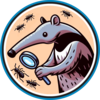
- 0 Resources
- 0 Discussions
- 1 Groups
Electronics Engineer working in the development of smart conservation technology solutions.

- 0 Resources
- 0 Discussions
- 9 Groups
- @Cwoodman
- | She, her
I work between academia and private technology development to meet the needs of conservation researchers. I am an owner of a conservation technology company and a PhD who researches how to save imperiled wild populations.

- 0 Resources
- 7 Discussions
- 3 Groups
- @cbnatphoto
- | He / Him
Clay Bolt is the Manager of Pollinator Conservation for World Wildlife Fund-US and a conservation photographer focused on supporting policy that protects insects from pesticides and other threats. Clay’s words and images have appeared in publications such as National Geographic M
- 0 Resources
- 1 Discussions
- 3 Groups
Conservation biologist eager to develop AI skills

- 0 Resources
- 0 Discussions
- 1 Groups
Tech for Conservation

- 0 Resources
- 2 Discussions
- 13 Groups
- 0 Resources
- 0 Discussions
- 1 Groups
- @Cris
- | he / him
Octophin Digital
Senior Developer at Octophin Digital and constant maker.

- 0 Resources
- 5 Discussions
- 5 Groups
- @VijayKarthick
- | He/Him
Nature Conservation Foundation
I'm a PhD student from India, interested in utilising bioacoustics and technology to answer ecological questions. I'm a frog nerd :)

- 0 Resources
- 2 Discussions
- 9 Groups
- 0 Resources
- 1 Discussions
- 5 Groups
This position focuses on the ecology aspect of the project, while a second PhD in Ilmenau will be dealing with programming/AI development. Because of the high temporal resolution of our data, we can investigate how land...
9 January 2023
a technology-led solution to understanding the honeybees of the wasp world
8 December 2022
In case you missed our webinar on Pollinator monitoring, here is the recording. We had presentations from three teams who will be presenting their work in designing automated monitoring tools for flower-visiting...
17 November 2022
Five articles that include conservation tech published at Mongabay
20 October 2022
Nice overview paper on technological advances to improve insect monitoring
16 September 2022
Job opening at the UK Centre for Ecology and Hydrology
19 August 2022
August 2024
June 2024
event
| Description | Activity | Replies | Groups | Updated |
|---|---|---|---|---|
| Aloha Luke,This is an amazing tool that you have created. Are your cameras availble for purchase? We use a lot of camera traps in the Hono O Na Pali Natural Area Reserve on Kauai... |
+4
|
AI for Conservation, Autonomous Camera Traps for Insects, Camera Traps | 13 hours 45 minutes ago | |
| how odd, yeah it works for me! maybe try this? |
|
Autonomous Camera Traps for Insects | 6 days 21 hours ago | |
| Hi everyone,I’m currently developing a multilingual, offline-friendly training program called ConTech Curriculum, designed... |
|
Autonomous Camera Traps for Insects, Camera Traps, Conservation Tech Training and Education, Protected Area Management Tools | 1 week 4 days ago | |
| Question! A key issue faced in my research area is that it is important to know the number of pest adult moths flying around a crop or... |
|
Autonomous Camera Traps for Insects | 2 months 2 weeks ago | |
| We have spent the past 9 months taking the lessons learnt from the AMI system to build an automated moth monitoring system... |
|
Autonomous Camera Traps for Insects, Camera Traps | 2 months 3 weeks ago | |
| The mothbox can currently be attached to a solar panel super easy (just plug in a barrel jack up to 20v 80 watts) and it charges the talentcell battery. We also monitor the power... |
|
Autonomous Camera Traps for Insects | 3 months 1 week ago | |
| Otherwise Australian Entomology Supplies has a few options available such as UV lights and black lights, such as a this portable UV lamp. They can ship internationally. |
+5
|
Autonomous Camera Traps for Insects | 3 months 2 weeks ago | |
| I'm excited to announce that Outreach Robotics has finalized the development of our new insect camera traps, now officially named ... |
|
Autonomous Camera Traps for Insects | 3 months 2 weeks ago | |
| Hey Amber, that makes a lot of sense! And this effort by Insect Detect is amazing, thanks for sharing! |
|
AI for Conservation, Autonomous Camera Traps for Insects | 3 months 3 weeks ago | |
| Hi all, I'm Vainqueur BULAMBO. I'm looking for a fully funded PhD opportunity in ecological data science or conservation... |
|
Acoustics, AI for Conservation, Autonomous Camera Traps for Insects | 4 months 1 week ago | |
| @hikinghack that's a complete update!A lot of compassion regarding the budget situation, especially knowing how great @briannaljohns is.It’s great to see a clear plan for the... |
|
Autonomous Camera Traps for Insects | 5 months ago | |
| Thanks! Yes, we added electronics to power an external UV light only during periods when the camera is set to take pictures. |
+23
|
Autonomous Camera Traps for Insects, Camera Traps | 5 months 2 weeks ago |
Scaling up insect monitoring using computer vision
6 April 2023 7:06pm
Who's going to ESA in Portland this year?
31 March 2023 9:27am
4 April 2023 4:04pm
Good idea! I've got a ransom assortment of different acoustic recorders I can bring along
5 April 2023 11:58pm
Indeed, I'll be there too! I like to meet new conservation friends with morning runs, so I will likely organize a couple of runs, maybe one right near the conference, and one somewhere in a nearby park where we can look for wildlife. The latter would probably be at an obscenely early hour, so we can drive somewhere, ideally see elk (there are elk within 25 minutes of Portland!), and still get back in time for the morning sessions.
Camera to follow wasps/attach on wasps
9 March 2023 5:16am
11 March 2023 2:44am
Hi @Lars_Holst_Hansen @tom_august
The link to the video is amazing. Thank you for it.
The wasps that I am working on, are solitary. So, basically it is just this one female that builds the entire nest. Like what you (@tom_august) mentioned, the best option would be to keep a running camera at the nest to record the whole process of nest building. Having one placed inside will be difficult because even if we do work out a way to have lighting inside the nest, the light might be detrimental to the developing larva inside. Hence, it is likely not to be of any benefit.
I am totally smitten by the idea of having a sensor on the wasp body to track where it goes! We could get to know how far it travels to bring the prey and also to collect soil.
14 March 2023 1:30pm
@ShwetaMukundan I just saw this thesis published on tracking bees. Maybe you could use the same method?
Optimising and applying RFID technology to monitor individual honey bee behaviour in agricultural field settings
The western honey bee, Apis mellifera L. is critical for the pollination of numerous native plant species and agricultural crops globally. Although providing a crucial service; honey bee health is currently in decline. One of the most effective methodologies for understanding this decline, is monitoring variation in individual bee behaviour. This thesis presents the development of an optimised radio frequency identification (RFID) system, which is designed for monitoring full-strength colonies in field locations. The potential of this system was subsequently demonstrated through the investigation of bee longevity and behaviour in two important horticultural crops: sweet cherry and hybrid carrot seed. Furthermore, the versatility of this system was demonstrated by using RFID data to explore the relationship between various weather parameters and foraging behaviour.RFID technology has been widely utilised for researching honey bees; however previous studies have predominantly been restricted to small nucleus colonies in semi-field conditions. Application has also been limited by poor detection accuracy and lack of analytical methodologies. To address these issues, a solar powered RFID system was developed and extensively tested for use on full-strength commercial bee colonies (Chapter 2). This included the design of a unique 'maze' entrance that can be retrofitted to any Langstroth hive to enable the accurate detection of bees equipped with RFID tags. The system consists of readily available componentry, which is cost effective and can be purchased off the shelf. Recommendations also include the comparisons of different commercially available RFID tags utilised in previous studies. All facets of RFID design were considered to develop one of the most accurate systems presented to date, with tag detection rates as high as 90.5% for passing bees. Extensive analytical methodology is provided to confirm system accuracy and to facilitate biological understanding. This enables the quantification of key parameters linked to honey bee ontogeny and foraging performance such as: number of flights, flight duration, age at onset of foraging and survival.Modern agricultural production is becoming increasingly reliant on protected cropping systems such as greenhouses, bird netting and polythene tunnels. Although these systems represent distinct advantages for plant growth, little is known about the potential impacts to insect pollinators. To address this, the newly developed RFID system was utilised to investigate the impact of bird netting and two polythene rain cover systems on the behaviour of honey bees in sweet cherry (Prunus avium L.) crops (Chapter 3). Across two seasons, six commercial bee colonies were equipped with RFID systems and over 1300 tagged bees. These colonies were positioned in a neighbouring open field (control), under permanent bird netting or within polythene systems (semi-permanent VOEN system in 2019 and an automated retractable Cravo system in 2020). Individual bee behaviour was subsequently monitored throughout the pollination period to determine the impact of covers on orientation, foraging behaviour and survival. Polythene rain covers (VOEN and Cravo) were found to increase the time required for bees to orientate by 35-45%. However, once orientated, the bees placed under both netted and polythene coverings conducted up to 155% more foraging trips and spent longer outside of the colony. Crop coverings were observed to have limited impact on age of onset of foraging or survival, with all groups transitioning to foraging at an optimal age (mean 15.7-24.1 days) and meeting or exceeding life expectancy (median 19.6-27.5 days). This represents the first study of its kind utilising RFID systems on full size colonies during commercial pollination.Modern agricultural production is also reliant on hybrid vegetable varieties due to key advantages for quality, yield and disease resistance. Despite the agronomic advantages, production of hybrid vegetable seed represents a challenge for pollination due to unattractive floral resources, isolated growing locations and reliance on insecticide applications during crop pollination. The newly developed RFID system was again utilised to investigate the impact of hybrid carrot (Daucus carota L.) seed production on the behaviour of honey bees (Chapter 4). Across two seasons, instrumented colonies were placed in either on-crop or off-crop groups with over 900 bees tagged per season. Differences in bee foraging age and behaviour, over the commercial pollination period, were again compared between groups using RFID data and the collection of pollen pellets and nectar foragers. Hybrid carrot crops were found to have a significant impact on honey bee foraging behaviour, with bees on the crop conducting less frequent but longer foraging trips. Substantial variation in behaviour was associated with the poor attractiveness of hybrid carrot floral resources. Although impacting foraging behaviour, there was little evidence to suggest that the hybrid seed crops were detrimental to bee health, with carrot bees orientating successfully, transitioning to foraging 4-5 days later, surviving longer (median 24.3-30.6 days) and collecting 3x more pollen in general, as compared to off-crop groups. However, only 2% of this pollen originated from carrot. This represented the first direct investigation into individual bee behaviour within hybrid cropping systems.A significant factor impacting bee behaviour and pollination in all environments is weather. The conditions preventing bees from foraging are well understood; however, it is not known how bees adapt their behaviour in response to changes in weather during a foraging trip. In Chapter 5, RFID trip data (1728 trips from 105 bees) in combination with high resolution weather recordings, were used to successfully model the influence of a variety of weather parameters on foraging flight duration. A series of nested linear mixed models revealed that temperature, humidity, solar radiation, barometric pressure and windspeed impacted trip duration. The additional factors of bee age, colony and rainfall were also considered in all models. Barometric pressure was found to be the most effective individual weather variable for modelling trip duration, accounting for 61.2% of variation. However, the most effective model overall, incorporated the minimum, maximum and mean of all-weather variables, accounting for 72.4% of variation in trip duration. This represents a highly complex relationship, with bees perceiving changes in weather and modifying behaviour accordingly.In the final chapter, a synopsis of the experimental findings is provided including recommendations for future research. This thesis presents critical advancements in the methodologies for studying variation in individual bee behaviour. The potential of the newly developed RFID system has been demonstrated in key agricultural environments, generating data with both practical and biological relevance. It is hoped that this can contribute to optimising both bee health and pollination in the future.
30 March 2023 1:14pm
Hi @ShwetaMukundan,
this could be interesting for you:
https://www.science.org/doi/10.1126/scirobotics.abb0839
https://www.youtube.com/watch?v=VwiHf2T9bLU
https://edition.cnn.com/2020/10/13/us/murder-hornet-track-washington-trnd/index.html
All from this working group:
https://homes.cs.washington.edu/~gshyam/
Exploring storage options for mass data collection
22 March 2023 3:20am
22 March 2023 7:36pm
Hi Adam!
I mostly live within the ecoacoustics space so I'll just speak on the hydrophone part of your request; Arbimon is a free web/cloud-based platform with unlimited storage for audio files. We've got an uploader app as well for mass-uploading lots of files. There's also a bunch of spectrogram visualization/annotation tools and analysis workflows available. It's AWS running under the hood.
I have some experience working directly with AWS & Microsoft Azure, and I've found personally that AWS was more user-friendly and intuitive for the (fairly simplistic) kinds of tasks I've done.
27 March 2023 5:23am
RECORDING Workshop on India-focused projects on insect monitoring
23 March 2023 4:24pm
Catch up with The Variety Hour: March 2023
23 March 2023 11:09am
Monitoring airborne biomass
14 March 2023 10:30am
14 March 2023 1:34pm
Looks like you want to have a read of this thread:
20 March 2023 2:44pm
Our project in very short is, setting up a sensor network for monitoring airborne biomass, mainly insects, birds and bats in near realtime, and to develop a forecast model to be used for mitigation with respect various types of human-wildlife conflicts (e.g. wind power, pesticide application, aviation). Our expertise is mainly in radar monitoring, but we aim on add insect camera information to be merged with the quantitative biomass measeurments by radar.
Workshop V: India-focused projects on insect monitoring
1 March 2023 10:00am
Tropical pilot of insect camera traps
22 February 2023 12:17pm
AMI-trap unboxing - Automated moth monitoring system
1 December 2022 9:44am
20 February 2023 4:59pm
Here is the website where you can find more info about tue AMI trap.
https://www.ceh.ac.uk/ukceh-ami-trap-automated-monitoring-insects
20 February 2023 5:29pm
This video is so great - I don't know what I was imagining that you were building, but this is so much bigger and more involved than whatever I was vaguely thinking. Really cool to see!
Side comment - could we make conservation tech unboxings a thing?
Job: Building a network of conservation tech across continents
2 February 2023 1:50pm
Solar panels in the tropics
26 January 2023 12:28am
27 January 2023 1:23pm
Hi Tom,
I'm with Akiba, you have to test. A collaborator has deployed solar-augmented kit in secondary jungle and some of them got enough light, and others didn't, so it can work. The open circuit voltage of solar panels doesn't change a whole lot in dim light, but the current drops drastically. So you would choose an oversize panel of the same voltage (or a bit higher).
Thanks
27 January 2023 3:56pm
I've been intrigued by this topic. Thinking about ways you could use drones or some kind of launcher to deploy panels above the canopy. Sadly I live in the great white north so I have no way of testing any concepts. Maybe even some kind of solar balloon that could float above the canopy. Interesting design problem.
30 January 2023 10:10am
Hey Tom,
Since the output is dependent on a couple of factors such as the solar irradiance of the place, shading from the canopy, the type of solar panels (mono, poly or amorphous) and orientation of the panels, etc, I'd suggest you use a software to simulate the different parameters to get an almost accurate estimation of the output. You can try PVsyst- it has a free month trial (I haven't used it before but I hear it's great) or any other PV software :)
Apply Now: AI for Conservation Office Hours
18 January 2023 5:15pm
PhD position (m/f/d) in Insect Ecology and Conservation
9 January 2023 12:53pm
Cameras - pros and cons
21 September 2022 2:04pm
23 November 2022 2:58pm
Hi Liz, unfortunately you will still need a Raspberry Pi as host for the OAK-1 camera to reproduce our hardware setup. It's also possible to use another Linux-based system (e.g. Raspberry Pi alternatives), but I didn't test this myself and the setup process will be different to our documentation (and probably not so straightforward). I'm planning to publish the documentation website in the next weeks, but I can already send you detailed information about putting together the hardware if you are still interested.
7 December 2022 1:03am
Hello,
I'm working on a light weight light trap based on Bjerge et al 2021, however I opted to use an ArduCam 64mp (9152 x 6944 resolution). Designed for the pi specifically and at $60 it checks many of your criteria. I haven't put everything together yet so I can't speak for white balance and power usage, but the autofocus appears to work well from initial tests, and it is tiny.
Cheers,
Hubert
8 December 2022 4:06pm
Awesome! it would be great to hear how you get on, maybe you can share your results here when you have them. Is the camera only for the Pi? That could be a problem for scaling as Pis are quite hard to come by at the moment.
PhD - Sensory ecology of vespine wasps
8 December 2022 12:47pm
Easy-RIDER project Workshop IV: Pollinator monitoring recording
17 November 2022 2:39pm
Implementation of video surveillance to quantify the predation rate
25 October 2022 4:26pm
3 November 2022 10:16am
RaspberryPi-maggedon!
We are having this problem too and it might be worthy of its own thread! The lack of RaspberryPis is a big problem and we are currently looking into alternatives. We haven't found one yet, but if we do I will let you know. @Max_Sitt might have some suggested alternatives for his system?
4 November 2022 10:54am
Hi Julien,
we are working with the Luxonis OAK-1 which can run lightweight detection models (e.g. YOLOv5n/s) directly on-device. However you will still need a host, for outdoor deployment Raspberry Pi (e.g. Zero 2 W) is perfect. But for testing you could also use another Linux-based system as host device or just connect it to e.g. your notebook. You can find more info in the Luxonis Docs.
Regarding the Raspberry Pi availability, this blog post from Jeff Geerling probably sums up the current situation pretty well. I hope in Q1 2023 the situation will get better, but at the moment nobody really knows for sure.
Workshop IV: Pollinator monitoring
21 October 2022 12:27pm
3 November 2022 8:18pm
4 November 2022 9:10am
New conservation tech articles from Mongabay
20 October 2022 7:45pm
Most interesting images / sightings 'caught on camera'
12 August 2022 2:50pm
26 August 2022 12:07pm
No - the trap was in their path and they just walked through it. I've now moved it to a place they can't go. The biggest threat to the moths is from pied currawongs. I schedule the trap so it shuts off at least two before sunrise to try to avoid them feasting on the larger insects.
29 August 2022 6:18pm
At first I was finding wings below the screen in the morning when I put our units out. So I put a game camera on the units to see what was feeding and when. I found three bird species, likely 3 individuals, quickly found it to be a good bird feeder- Song Sparrow (most frequent), House Wren, and this Tufted Titmouse. I changed my units to turn off about 1.5 hours before dawn and that worked! Nearly all the moths left the scene before the birds came to visit.
26 September 2022 10:43pm
My most prized camera trap image - a hummingbird caught on camera!
Counting insect density automatically with Intel RealSense D455?
31 August 2022 3:54pm
23 September 2022 12:06pm
Might be good to add this to the 'Automated Camera Traps for Insects' group
Emerging technologies revolutionise insect ecology and monitoring
16 September 2022 10:11am
Identify animal from Image
2 August 2022 1:37am
2 August 2022 2:54am
Hi Jitendra.
If they are still images, many people are using Megadetector to analyze their images. I'm not sure how it will do in species classification, but it can tell you if there are images of interest in the shots. Others here can probably give you more detailed instructions on how to use it to batch process camera trap images.
2 August 2022 10:24am
Have you considered creating a Kaggle competition? If you already have lots of images, and some that have been labelled, then this could be a good way to get people working on a solution
Workshop III: Designing machine learning tools to process camera trap data automatically
1 August 2022 10:35am
Workshop II: Assessing automated insect monitoring
1 August 2022 10:23am
Workshop I: Automated moth monitoring deployments
1 August 2022 10:12am











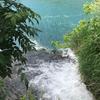
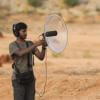

























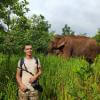





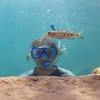

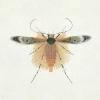
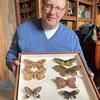
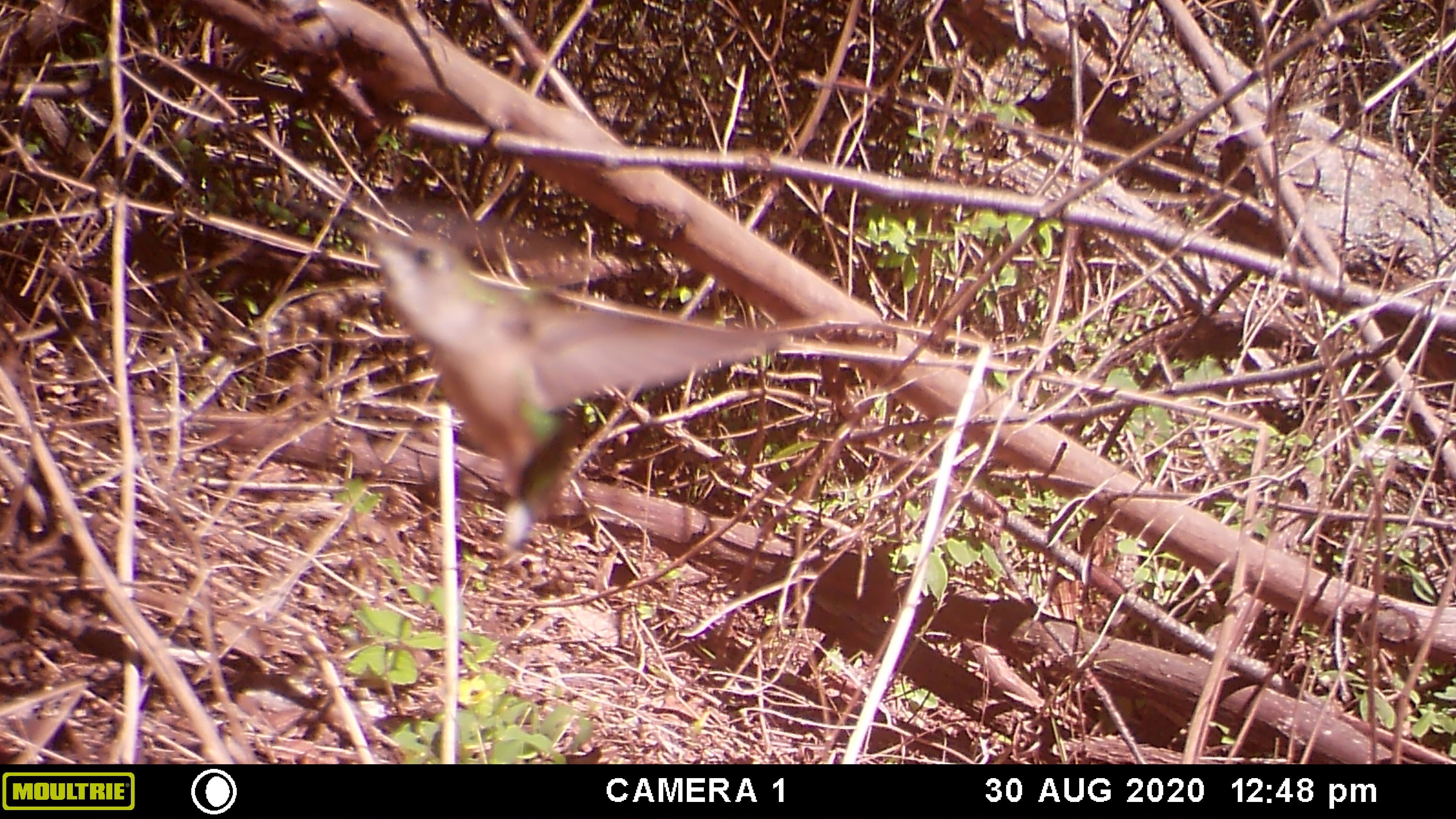


4 April 2023 9:58am
That sounds great. I think you should encourage people to bring a bit of tech with them, can be a good conversation starter/ice-breaker